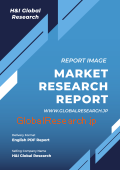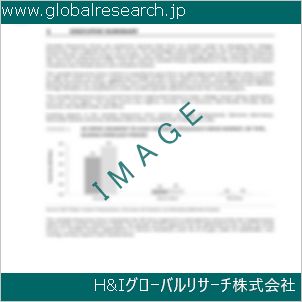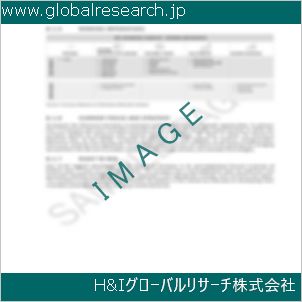Table of Contents
1 Industry Overview of Antimony
1.1 Definition and Specifications of Antimony
1.1.1 Definition of Antimony
1.1.2 Specifications of Antimony
1.2 Classification of Antimony
1.3 Applications of Antimony
1.3.1 Nuclear Application
1.3.2 Non-Nuclear Application
1.4 Industry Chain Structure of Antimony
1.5 Industry Overview and Major Regions Status of Antimony
1.5.1 Industry Overview of Antimony
1.5.2 Global Major Regions Status of Antimony
1.6 Industry Policy Analysis of Antimony
1.7 Industry News Analysis of Antimony
2 Manufacturing Cost Structure Analysis of Antimony
2.1 Raw Material Suppliers and Price Analysis of Antimony
2.2 Equipment Suppliers and Price Analysis of Antimony
2.3 Labor Cost Analysis of Antimony
2.4 Other Costs Analysis of Antimony
2.5 Manufacturing Cost Structure Analysis of Antimony
2.6 Manufacturing Process Analysis of Antimony
3 Technical Data and Manufacturing Plants Analysis of Antimony
3.1 Capacity and Commercial Production Date of Global Antimony Major Manufacturers in 2023
3.2 Manufacturing Plants Distribution of Global Antimony Major Manufacturers in 2023
3.3 R&D Status and Technology Source of Global Antimony Major Manufacturers in 2023
3.4 Raw Materials Sources Analysis of Global Antimony Major Manufacturers in 2023
4 Capacity, Production and Revenue Analysis of Antimony by Regions, Types and Manufacturers
4.1 Global Capacity, Production and Revenue of Antimony by Regions 2019-2024
4.2 Global and Major Regions Capacity, Production, Revenue and Growth Rate of Antimony 2019-2024
4.3 Global Capacity, Production and Revenue of Antimony by Types 2019-2024
4.4 Global Capacity, Production and Revenue of Antimony by Manufacturers 2019-2024
5 Price, Cost, Gross and Gross Margin Analysis of Antimony by Regions, Types and Manufacturers
5.1 Price, Cost, Gross and Gross Margin Analysis of Antimony by Regions 2019-2024
5.2 Price, Cost, Gross and Gross Margin Analysis of Antimony by Types 2019-2024
5.3 Price, Cost, Gross and Gross Margin Analysis of Antimony by Manufacturers 2019-2024
6 Consumption Volume, Consumption Value and Sale Price Analysis of Antimony by Regions, Types and Applications
6.1 Global Consumption Volume and Consumption Value of Antimony by Regions 2019-2024
6.2 Global and Major Regions Consumption Volume, Consumption Value and Growth Rate of Antimony 2019-2024
6.3 Global Consumption Volume and Consumption Value of Antimony by Types 2019-2024
6.4 Global Consumption Volume and Consumption Value of Antimony by Applications 2019-2024
6.5 Sale Price of Antimony by Regions 2019-2024
6.6 Sale Price of Antimony by Types 2019-2024
6.7 Sale Price of Antimony by Applications 2019-2024
6.8 Market Share Analysis of Antimony by Different Sale Price Levels
7 Supply, Import, Export and Consumption Analysis of Antimony
7.1 Supply, Consumption and Gap of Antimony 2019-2024
7.2 Global Capacity, Production, Price, Cost, Revenue, Supply, Import, Export and Consumption of Antimony 2019-2024
7.3 USA Capacity, Production, Price, Cost, Revenue, Supply, Import, Export and Consumption of Antimony 2019-2024
7.4 EU Capacity, Production, Price, Cost, Revenue, Supply, Import, Export and Consumption of Antimony 2019-2024
7.5 China Capacity, Production, Price, Cost, Revenue, Supply, Import, Export and Consumption of Antimony 2019-2024
7.6 Japan Capacity, Production, Price, Cost, Revenue, Supply, Import, Export and Consumption of Antimony 2019-2024
8 Major Manufacturers Analysis of Antimony
8.1 Manufacturer One
8.1.1 Company Profile
8.1.2 Product Picture and Specifications
8.1.2.1 Type I
8.1.2.2 Type II
8.1.2.3 Type III
8.1.3 Capacity, Production, Price, Cost, Gross and Revenue
8.1.4 Contact Information
8.2 Manufacturer Two
8.2.1 Company Profile
8.2.2 Product Picture and Specifications
8.2.2.1 Type I
8.2.2.2 Type II
8.2.2.3 Type III
8.2.3 Capacity, Production, Price, Cost, Gross and Revenue
8.2.4 Contact Information
8.3 Manufacturer Three
8.3.1 Company Profile
8.3.2 Product Picture and Specifications
8.3.2.1 Type I
8.3.2.2 Type II
8.3.2.3 Type III
8.3.3 Capacity, Production, Price, Cost, Gross and Revenue
8.3.4 Contact Information
8.4 Manufacturer Four
8.4.1 Company Profile
8.4.2 Product Picture and Specifications
8.4.2.1 Type I
8.4.2.2 Type II
8.4.2.3 Type III
8.4.3 Capacity, Production, Price, Cost, Gross and Revenue
8.4.4 Contact Information
8.5 Manufacturer Five
8.5.1 Company Profile
8.5.2 Product Picture and Specifications
8.5.2.1 Type I
8.5.2.2 Type II
8.5.2.3 Type III
8.5.3 Capacity, Production, Price, Cost, Gross and Revenue
8.5.4 Contact Information
…
9 Marketing Trader or Distributor Analysis of Antimony
9.1 Marketing Channels Status of Antimony
9.2 Traders or Distributors with Contact Information of Antimony by Regions
9.3 Ex-work Price, Channel Price and End Buyer Price Analysis of Antimony
9.4 Regional Import, Export and Trade Analysis of Antimony
10 Industry Chain Analysis of Antimony
10.1 Upstream Major Raw Materials Suppliers Analysis of Antimony
10.1.1 Major Raw Materials Suppliers with Contact Information Analysis of Antimony
10.1.2 Major Raw Materials Suppliers with Supply Volume Analysis of Antimony by Regions
10.2 Upstream Major Equipment Suppliers Analysis of Antimony
10.2.1 Major Equipment Suppliers with Contact Information Analysis of Antimony
10.2.2 Major Equipment Suppliers with Product Pictures Analysis of Antimony by Regions
10.3 Downstream Major Consumers Analysis of Antimony
10.3.1 Major Consumers with Contact Information Analysis of Antimony
10.3.2 Major Consumers with Consumption Volume Analysis of Antimony by Regions
10.4 Supply Chain Relationship Analysis of Antimony
11 Development Trend of Analysis of Antimony
11.1 Capacity, Production and Revenue Forecast of Antimony by Regions and Types
11.1.1 Global Capacity, Production and Revenue of Antimony by Regions 2024-2029
11.1.2 Global and Major Regions Capacity, Production, Revenue and Growth Rate of Antimony 2024-2029
11.1.3 Global Capacity, Production and Revenue of Antimony by Types 2024-2029
11.2 Consumption Volume and Consumption Value Forecast of Antimony by Regions, Types and Applications
11.2.1 Global Consumption Volume and Consumption Value of Antimony by Regions 2024-2029
11.2.2 Global and Major Regions Consumption Volume, Consumption Value and Growth Rate of Antimony 2024-2029
11.2.3 Global Consumption Volume and Consumption Value of Antimony by Types 2024-2029
11.2.4 Global Consumption Volume and Consumption Value of Antimony by Applications 2024-2029
11.3 Supply, Import, Export and Consumption Forecast of Antimony
11.3.1 Supply, Consumption and Gap of Antimony 2024-2029
11.3.2 Global Capacity, Production, Price, Cost, Revenue, Supply, Import, Export and Consumption of Antimony 2024-2029
11.3.3 USA Capacity, Production, Price, Cost, Revenue, Supply, Import, Export and Consumption of Antimony 2024-2029
11.3.4 EU Capacity, Production, Price, Cost, Revenue, Supply, Import, Export and Consumption of Antimony 2024-2029
11.3.5 China Capacity, Production, Price, Cost, Revenue, Supply, Import, Export and Consumption of Antimony 2024-2029
11.3.6 Japan Capacity, Production, Price, Cost, Revenue, Supply, Import, Export and Consumption of Antimony 2024-2029
12 New Project Investment Feasibility Analysis of Antimony
12.1 New Project SWOT Analysis of Antimony
12.2 New Project Investment Feasibility Analysis of Antimony
13 Conclusion of the Global Antimony (CAS 7440-36-0) Industry 2024 Market Research Report
| ※参考情報 アンチモン(Sb、原子番号51)は、金属元素の一種であり、周期表では炭素族に分類されています。抗さび性があり、化学的には金属的な性質を持つ元素です。自然界では、主に鉱石の形で存在し、その中でもストビナイト(Sb2S3)やリッチウルフ(Sb2O4)などが重要な鉱石として知られています。 アンチモンの主要な特徴の一つは、その物理的性質です。安定した同位体はおらず、主に二つの同位体であるSb-121とSb-123が存在します。室温では硬く脆い金属であり、金属的な光沢を持っています。また、融点は630.6℃、沸点は1,587℃であり、高温に耐えることができるため、さまざまな産業分野で利用されています。 アンチモンにはいくつかの種類がなく、主に化合物として使われます。例えば、三アンチモン(SbCl3)や五アンチモン(SbCl5)などの塩素化物、酸化物、硫化物などがあり、それぞれ異なる特性を持っています。特に、三アンチモンは有機合成において触媒として使われることがあります。また、合金の添加物としても使用され、耐摩耗性や耐熱性を向上させる役割を果たします。 用途としては、主に電子機器、化学、冶金、耐火材料、ブラス(銅合金)など多岐にわたります。アンチモンは、フリーメタルリード(鉛)と合金化された場合、耐食性や耐摩耗性を高め、バッテリーや電子部品の製造に貢献しています。また、ガラスやセラミックスの製造においても、色素やフラットクリスタルの添加剤として使用されています。 さらに、アンチモンはその化学的性質から、火炎抑制剤や難燃剤としても利用されます。特にプラスチックやゴム製品に添加することで、火災の危険を減少させる効果があります。それに加え、医療分野でも利用されていることがあります。例として、古くから抗寄生虫剤としての用途が知られていますが、最近では新しい治療法の研究も進んでいます。 アンチモンに関連する技術の一つとして、ナノテクノロジーの利用が挙げられます。ナノサイズのアンチモン粒子は、催化反応やメディカルアプリケーションにおける高い効率性から注目されています。また、センサーデバイスにおいても、しきい値低下の特性を活かして、様々な物質の検出に使用されています。 最後に、アンチモンの取り扱いには注意が必要です。毒性があり、長期間の曝露は健康に悪影響を与える可能性があります。したがって、製造や加工、利用の際には適切な安全対策を講じることが求められます。無理のない形での利用を促進するためには、代替材料の探求やリサイクル技術の発展が重要な課題となるでしょう。 このように、アンチモンは多様な用途と特性を持つ重要な元素であり、今後も技術の進展とともにその利用範囲は広がっていくことでしょう。 |
❖ 免責事項 ❖
http://www.globalresearch.jp/disclaimer












